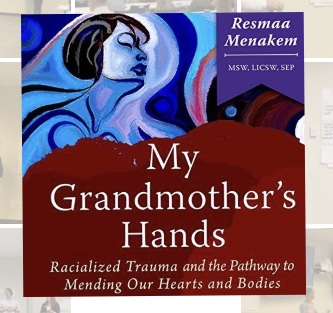This collection of reports, shared with edited highlights, is posted in hopes of raising awareness of the consequences of race-based traumatic stress and ways to help heal and prevent race-based trauma.
1. Crossing the Racial Rubicon
Noted mental health practitioner, Dr. Alan Siskind says: “It is critically important to recognize race-based traumatic stress and not ignore its psychological and emotional impact even though there are numerous pressures to deny or under-estimate the impact of it. As David Billings notes, race is so definitive in our lives that it pervasively defines the con-text in which we live. Mary Pender-Greene has, poignantly, noted that “being a person of color is a full-time job.” The trauma of racial discrimination creates poorer self-image, poorer living condi-tions, and poorer access to health and mental health services. This is true even as the socio-political and economic con-text in which people of color live creates greater need for these services. In addi-tion, then, to the well-researched and ac-cepted myriad of health issues created by the traumatic stress of racism, there is strong consensus that there are greater levels of anxiety, depression, suicidality and somatization among those impacted by racism. There is, as well, a wide range of psychological issues that exist as a result of the need to continually adapt to greater deprivations, e.g., poorer services, poorer housing, poorer education, and generally poorer access to those opportu-nities that get positively defined in our society.” Alan Siskind is the former CEO of the Jewish Board of Family and Children’s Services in New York City.
https://www.racialequitytools....cefiles/billings.pdf
2. My Grandmother’s Hands
“The racial divide” is not like a time zone or the Mason-Dixon line. We can’t heal white-body supremacy and white-skin privilege without addressing and healing trauma. And you can’t heal trauma without understanding how the human body processes and experiences it. That’s why I have an entire chapter on the vagal nerve—what I call the soul nerve—which is where we feel hope, dread,fear, empathy, anxiety, disgust, despair, and at least a dozen other emotions. It’s why I have a whole chapter on settling and safeguarding your body. And why I have chapters on reaching out to other bodies and harmonizing with them. These are where the opportunities for healing lie. You’re not going to heal the Mason-Dixon line, but real, breathing, flesh-and-blood bodies can heal. My book helps to begin that healing.
https://www.psychologytoday.com/us/blog/the-author-speaks/201709/my-grandmother-s-hand
3. Racism and Invisibility
This article presents an overview of the complex experiences of racism and the invisibility syndrome as they relate to issues of race-related stress, emotional abuse, and psychological trauma for people of color. Racism, through domination, power, and White privilege, is manifested in its individual, institutional, and cultural forms. Race-related stress is discussed as an outcome of perceived racism creating emotional abuse and psychological trauma. Consequences of racism are considered for family and couple relationships. A case example is presented illustrating the issues of racism in the professional and personal development of a staff member in a mental health agency. Examples of interventions to combat racism are given, such as identifying resilience and strengths of people of color, and the role of the antiracist movement.





Comments (0)